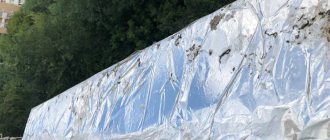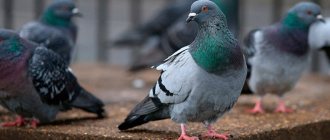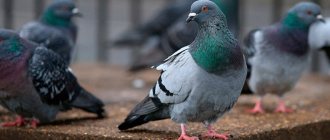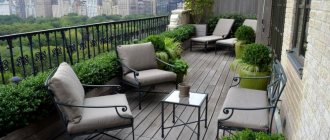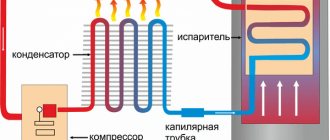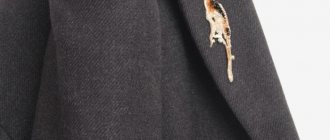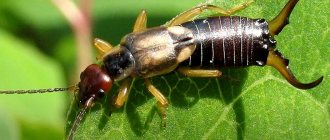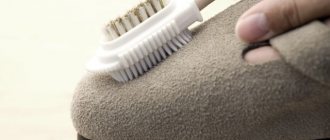An unglazed balcony in an apartment can often turn out to be not only a convenient additional space in the apartment, but also a haven for urban birds. More precisely, pigeons who love to sit on railings, hide under the roof of balconies from precipitation, and also build nests in their secluded corners. Along with the birds, their metabolic products appear on the balcony in the form of droppings and feathers, which spoil not only the appearance of this part of the house, but also the things stored here. Getting rid of the problem of the dominance of pigeons on an open balcony is not difficult if you know proven methods.
Why do pigeons fly to the balcony: reasons
Pigeons fly to balconies for various purposes, from comfortable conditions for themselves to food supplies. Let's look at why they settle on balconies in general and on yours in particular.
Birds hide on the balcony from the wind, precipitation: rain, snow. They build nests and look for food. From these reasons it follows whose open balcony the pigeons will choose. Getting rid of pigeons on a glassed-in balcony, of course, is not difficult. Even with open doors, mosquito nets cope with birds; there are also special ones against birds, metal and with fastening on the other side. This prevents them from being pressed en masse into the room or being torn with their beak or claws.
Pigeons on the balcony because of trash Photo © TASS / Kukhmar Kirill
Pigeons choose a specific balcony or loggia for the following reasons:
- accessibility to food or water. Keeping food uncovered attracts birds;
- neighbors regularly feed pigeons in the yard, there are many birds and they spread to all available places;
- a cluttered open balcony allows pigeons to wait out bad weather and build nests. Unlike tits, they are more difficult to notice and are quieter;
- open shelves and racks serve as shelter from wind and bad weather;
- return to their nest.
Before scaring birds away, it is worth preventing these reasons so that the pigeons do not return soon.
Chemical repellents
When deciding how to keep pigeons away from your home, you can opt for chemical repellents. It is advisable to use relatively safe means:
- sticky substances - they glue paws, glue feathers, which makes birds refuse to visit “dangerous” places;
- non-toxic repellents based on strong-smelling substances (essential oils, menthol, capsaicin) with an unpleasant taste - they do not lead to poisoning (preparations with such properties can be found in the assortment of Pestman or other manufacturers).
Such means have their drawbacks. Sticky substances accumulate dirt over time, lose effectiveness, and spoil the appearance of eaves, window sills, and ebbs. If a small bird lands on the trap, it may subsequently die due to feathers sticking together and the inability to fly normally. It is difficult to clean surfaces from frozen substances. Strong-smelling substances should not be used in closed spaces if there are people present. In open areas they lose effectiveness over time.
How to get rid of pigeons on a balcony or loggia
Once you are sure that the reason for the appearance of the birds has been eliminated, begin to fight the birds that have already fallen in love with the balcony. You should not combine methods, start with those that are accessible and effortlessly implemented.
Scare away pigeons with light
Creating glare on the balcony and loggia
Glare disorients and frightens birds. The pigeons, having weighed the pros and cons, will choose another, non-dangerous balcony. Let's look at the appropriate methods:
- cut the foil into narrow strips and tie one base like a broom. Developing in the wind, the foil will create both glare and disorienting sound;
- foil or reflective adhesive tape is applied to the window in full size or in a strip, or to the wall. We stick the reflective part towards the balcony. The method is not very effective at night, and the glare is not created as chaotically as in the first method. Use masking tape to make it easier to wipe off traces of glue from the glass!
- Balloons and other light products with sparkles, rhinestones and other shiny components are attached to the railings or inside the balcony. Noise,
- movement and glare will play both at night and during the day. The main thing is the breeze blowing;
- we hang garlands with glitter, you can make garlands with your own hands from old CDs. We hang it at the top of the balcony, preferably stretched lengthwise;
- place a reflective object on the windowsill. Choose a location that receives the most sun throughout the day.
The most effective methods are those that create noise, movement and glare at the same time.
Special lighting devices
By the way, laser pointers are used at airports to scare birds away from a distance! A solution for repelling pigeons and tits from both the balcony and the roof.
Share your methods. Perhaps someone hung a disco ball on the balcony and pointed laser pointers at it!?
How to scare away pigeons with water
Driving birds away from a balcony or loggia with water is difficult and costly in terms of money or time. Water is an effective method; birds often hide from rain and moisture, since wet feathers make them heavier and make it more difficult to fly.
- If the birds are permanent, you can spray them with water from a bottle, water pistol or other means. Don't spray on the crows, crows are vindictive;
- an automated water spray system will not require your intervention, but it costs money, and neighbors and objects on the balcony will not be happy with such know-how.
Automatic sprinkler
Children's water gun
How to scare away pigeons with sound
Pigeons, like other birds, are afraid of sounds, from rustling to loud and sharp ones. Neighbors don't like loud noises either.
- Use bioacoustic repellers that produce sounds, including birds of prey, cyclically at a specified interval, they are called;
- hanging tin cans make an unpleasant sound, but it is also noticeable to people;
- use devices that produce ultrasound that is inaudible to humans. Reviews for such devices are not always positive.
- the methods described in glare and light, which also make sounds, are suitable: a broom made of foil, garlands of CDs;
- plastic bags clamped against a window or hanging will create both glare and noise. From my own experience I can say that the bag does not protect for a long time from tits pecking at a nest in the polyurethane foam.
How to scare away from the site?
If the plot is large and poultry is raised on the farm, then pigeons pose a serious danger. They eat food and spread infectious and parasitic diseases. The enclosure can be protected by placing a net on top. It is unlikely that you will be able to scare away pigeons from the site forever, but the domestic stock will be protected. If we are talking about protecting the entire area, then you will have to purchase a repeller.
Sound vibrations that scare away pigeons are produced by a bioacoustic installation. It broadcasts sounds associated with predators or causing acoustic stress. Settings:
- contain several dozen sounds;
- able to operate on battery power for a long time;
- are programmed taking into account the tasks being solved (the volume, range of sounds, and the interval between them are adjusted).
The case is protected from precipitation, dust and temperature changes.
Additional options are available to protect the device from theft and damage. Such installations are used in suburban areas, on farms, elevators, gardens, fisheries and other farms. When used on farms, farm animals become accustomed to the sounds produced within a few days - installation of the device does not affect productivity. You can also use an ultrasonic or laser repeller.
If you have to fight with other birds, it is advisable to place a scarecrow on the site. Currently, you can choose a complex model that combines a “predatory” appearance (owl, eagle, falcon), sound, light, movement (the scarecrow flaps its wings, screams, its eyes glow).
Another way to fight is water. In case of a massive invasion of birds, they are watered with a hose. For constant repelling, sprayers are used - special devices with a motion sensor are especially effective.
What is the danger from pigeons on the balcony?
- The noise made by birds outside the window will soon cease to be pleasant and will become annoying, increasing stress and reducing sleep;
- birds peck out penoplex and polyurethane foam, even if the balcony or loggia is not open, but glazed. They make nests in holes and carry building materials into nests that have already been built. This is a loss of thermal insulation and money;
- constant dirt, from droppings and feathers to carried objects and crumbs. As a result, both the balcony slab is damaged and the balcony becomes more attractive to beetles and insects;
- Pigeons are carriers of diseases dangerous to humans. Frequent contact with them increases the risk of harming your health by contracting histoplasmosis and ornithosis.
- Birds will happily eat seedlings, and indoor plants will spoil the gardener’s mood.
I hope this article will help you get rid of annoying birds. Take part in the comments, share your experiences and ask questions!
What attracts birds and why they are dangerous
Birds are primarily attracted to open balconies, where a lot of rubbish, old furniture, and boxes have accumulated, where they can build nests . They also like to settle in cracks under canopies, under roofs or in attics in apartment buildings or country houses, entering through ventilation holes.
Birds find it comfortable to perch on railings, which is why they are often seen on balconies with old-fashioned railings. And if your neighbors constantly feed pigeons, scattering food on their windowsills, then, most likely, insatiable guests will settle on your territory.
Why do you need to discourage birds? The answer is obvious: uninvited guests create a mess and annoy those around them with their cooing. Few people will be pleased to find pigeon droppings on the balcony, and it is not easy to wash it off. In addition, bird feces contain uric acid, which quickly corrodes finishing materials, and if the invasion of birds is not dealt with, repairs may be necessary.
Pigeon droppings destroy façade finishes
Wild pigeons are carriers of a number of dangerous diseases and from this point of view they are often compared to rats. There may be bacteria in the droppings that can cause, for example, histoplasmosis, salmonellosis, and encephalitis. Therefore, if uninvited guests appear on your territory, take measures to evict them as quickly as possible.
Electronics to the rescue - modern methods of scaring away pigeons
In order not to listen to neighbors' complaints, it is recommended to make the fight against feathered robbers invisible and inaudible, and for this purpose an ultrasonic repeller is ideally suited. Similar devices are sold in specialized hunting stores. By setting the desired frequency, you can get rid of not only pigeons, but also rats, moles and other pests that annoy the owner of a country farm. Among such devices, bioacoustic ones are the most effective.
You can arrange a laser show for birds; flashes of bright rays will cause panic in individual individuals or a large flock equally. To do this, you can use both purchased electronics and homemade ones. It is good to supplement laser sources with a rotating ball, which is often used in discos. An ordinary strobe light will also be an effective measure.
Experts highly recommend trying the so-called thunder gun, powered by compressed air, when fighting pigeons. Using a simple control panel, the frequency of gas emissions is set. As a result, at certain intervals, claps will be heard, simulating the sound of gunfire. The only drawback is that the noise begins to irritate not only pigeons, but also people with pets.
Barriers
The mechanical method allows you to get rid of pigeons landing on window sills and balcony railings, but such a palisade does not look very aesthetically pleasing. However, the advantages of barriers outweigh the disadvantages.
The barrier looks like plastic tape. On one side it is covered with an adhesive substance, on the other it is equipped with a palisade of plastic spikes. Stick it on horizontal surfaces. Sometimes you can find a modification of such a barrier, attached with screws.
Before purchasing a barrier, you will have to measure the length of the surface that needs to be protected.
The chemical version of the barrier repeats the old Russian method of protecting wooden fortresses in winter. Instead of water, window sills and railings are lubricated with compounds that make the horizontal surface very slippery. This way you can get rid of all the pigeons that have occupied the balcony. But the balcony canopy is inconvenient to handle.
The manual indicates the duration of action of the composition and the required proportions.
Bird repeller comparison chart
| Name | Type | How to use | Price |
| Anti-landing spikes | Spikes | Install on a cornice or windowsill | 170 rub. |
| Bird scarecrow | Scarecrow | Install next to a protected object | 1650 rub. |
| Reflective pendant – Drop | Reflector | Hang in the right place/stretch | 150 rub. |
| Scare tape | Reflector | 500 rub. | |
| Repellent eyes | Repellers - “eyes” | Hang in the right place or throw into the pool | 800 rub. |
| Bird net | Net | Use as a barrier | 290 rub. |
| EcoSniper | Sound repeller | Install in areas of unnecessary bird activity | 5650 rub. |
| Balcony Gard | Ultrasonic repeller | 9690 rub. | |
| EcoSniper LS-987BF | 4100 rub. | ||
| Bird repellent gel | Chemical repellents | “Liquid nails”, leave a strip on the cornice | 2200 rub. |
Landing interference, harsh methods
Thorns also sometimes don’t look very nice, especially on the windowsill. A fishing line stretched in several rows will be almost completely invisible to unwitting spectators. If you are afraid that the bird will get tangled with its paws, you can tie a string to a strip of durable material and stretch the resulting device along the window sill. The wind will sway the fabric, and the tension will not allow the pigeon to sit down, even if it turns out to be not a timid one.
Many who have often encountered the occupation of window sills by pigeons recommend rubbing the surface with something slippery. For this purpose, for example, Vaseline is suitable as a completely harmless neutral substance. Birds, when landing, begin to slide, and as a result they understand that this place is inconvenient for living. Oils and fats are not recommended as they will attract flies and other insects.
Another option, proposed by experts, differs only in that the substance distributed over the surface must be sticky and retain this property for a long time. Birds won't like their feet being sticky. However, this method is quite controversial in terms of convenience for homeowners, since it will be difficult to wash the surface afterwards. There is also a certain risk of sticking when the desire or need arises to go out onto the balcony.
